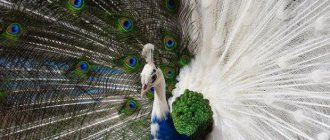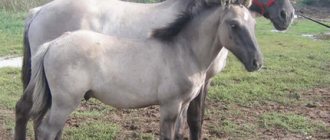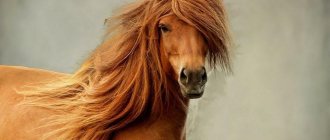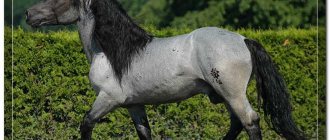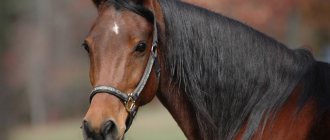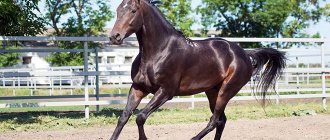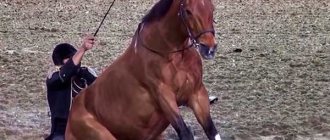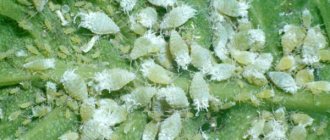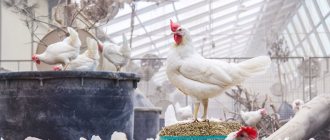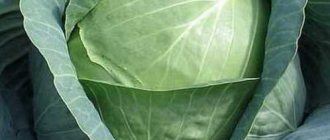Man tamed horses. As a result of selection, many breeds arose. Fur color varies from white to black. Horses' coats come in shades of red, brown and yellow, and a wide range of patterns adorn their bodies. Horses are found piebald and covered with uniform spots. The size of the animal depends on the breed, ranging from 227 to 900 kg in weight, in length from 220 to 280 cm and from 0.9 to 1.7 meters in height.
Description of the horse
The horse has oval-shaped hooves, a long tail, short hair on the body, long slender legs, a muscular and strong body, an elongated strong neck and a large oblong head. The mane is an area of coarse hairs that extends along the dorsal side of the neck in both domestic and wild species. Horses graze on the grass. To chew plants, they have complex and constantly growing molars in their mouths. The thick, winter coat develops in September-October and is fully grown by December. Winter fur begins to shed in spring, and in summer the body is covered with smooth and fine wool.
Other physical features:
- warm-blooded;
- bilateral symmetry of the body;
- both sexes are similar.
Black horse
The horse's color is dominated by a magnificent, thick black color. The fur on their toned bodies shimmers luxuriously in the sun. White markings also look beautiful on horses. The tail and mane are also strictly black. It is difficult to find pure black horses today. Mostly used are bases with kaura and bay admixture.
Attention! Among French Ariegeoises and Dutch Frisians, black is the only acceptable color. A horse with a different color will not be allowed to breed.
Modern variations:
- Black woman in tan. Her fur fades in the summer heat. This causes the ends of the hair to turn red. Some representatives of the substrate become dirty brown by autumn, but during the winter they acquire their original color. This variability occurs due to the instability of the black pigment.
- Ash-black. The shade of the horse's coat is not so rich and deep. It has a slight tint of chestnut or dark brown. The sign is difficult to notice with the naked eye.
- Silver-black. This horse is much lighter than the original. The body is covered with apples (spots) of a silvery hue. The head is darker than the body.
Types of horses
Wild horse (Equus ferus), also known as Przewalski's horse
Przewalski's horse
Smaller than most domestic horses. Thick, short neck and short limbs, compact build. The iris of the eyes is usually brown, but some individuals are blue. The mane and tail, unlike domestic horses, shed annually. The mane is dark brown to black and stands straight without a fringe. Domestic horses have long, flowing manes. The tail is short-haired, the hairs gradually lengthen on the sides. Domestic horses have long tail hairs throughout their tail. The muzzle is short and high, light, often white, the edges of the nostrils are dark, the lower edge of the jaw is straight. The skin has two colors: bright yellowish-red-brown and pale gray-yellow. The head and neck are darker than the body. The lower part of the body is lighter than the sides. 3-10 thin dark stripes on legs. A dark dorsal stripe ("eel") runs from the mane down to the tail.
Domesticated horse (Equus ferus caballus)
Domesticated horse
It has a long neck and legs, hard hooves. Over the years of reproduction, people have developed many different hair and coat colors and color patterns. Some of the most common colors are grey, dark reddish brown and light brown. Different breeds vary significantly in size.
Feral horse (Equus caballus)
wild Horse
Morphologically similar to a domestic horse. On average, it is 1-1.6 m high at the shoulder and weighs 350-450 kg. The general appearance varies, with coat colors ranging from black, brown and white to white with orange or brown spots. The coat is short and thin, the tail is relatively short, on the forehead (forelock) and along the neck (mane). The average lifespan of E. caballus is 25 – 30 years.
Kiang (Equus kiang)
Kiang
The kiang's coat is reddish in summer and brown in winter, the lower parts of the body are white, they do not change depending on the season. Kiang is 140 cm shoulder and weighs between 250 and 440 kg.
Kulan (Equus hemionus)
Kulan
Compared to other types of horses, it has short legs. Body color varies depending on the season, reddish-brown in summer, yellowish-brown in winter. They have a black stripe edged with white that runs down the middle of their back. Straight mane of dark color. The belly and chest are white, with characteristic white markings on the back of the shoulder and the front of the rump. On the muzzle there is a white area around the nostrils, the lips are grayish.
Faroe Islands horse (Faroe pony)
Faroese horse
Found in the Faroe Islands in the North Atlantic. This is one of the oldest breeds of horses, very rare, almost extinct.
Mustang
These horses are descendants of a Spanish breed called Iberian horses, technically mustangs are feral horses, not wild horses.
Care and maintenance of gray suit
When keeping horses, it is very important to properly prepare their habitat.
It should be dry and spacious, with good lighting. Preferably with a ceiling height of 2.5-3.5 meters. A durable floor covered with dry bedding is essential. Sawdust, straw or dry peat can be used as bedding. There should be no drafts; for this purpose, the entrance is planned on the windward side with a width of 1 m and a height of 2 m, and the door should only open outward.
The stable should not freeze; buildings made of brick or wood are well suited for this. A pen or stall is set up inside: for mares with a foal, an area of 10 m2, and for the rest, 7-8 m2. Windows should correspond to the floor area in a ratio of 1:15. The stalls are equipped with feeders or boxes with 2 sections: large for roughage, small for concentrated feed. Near the stables they set up a pen for walking animals - a subdock; it is usually made of strong poles.
Cleaning a horse is carried out with a brush or a rope of straw, always starting from the head
Particular attention is paid to the hooves. It is mandatory to keep the hooves clean; they must be regularly inspected and trimmed as they grow, approximately once every 1-1.5 months; at the same time, the animal must be re-shod if required.
Horse breeds
Horses show a variety of colors and come in different breeds. There are over 350 different breeds of horses and ponies. They are divided into the following groups:
- Light horses with thin bones and legs and weighing less than 590 kg, such as Thoroughbreds, Highbreds, Morgan horses and Arabian horses.
- Heavy or draft horses that weigh more than 600 kg. These are strong breeds with large bones and strong legs, for example Percheron, Brabançon, Russian draft (Bityug).
Modern horse breeds are bred to be both form and function, that is, to have certain physical characteristics needed to perform a particular type of work. Light, refined horses, such as the Arabian or Akhal-Teke, were bred in dry climates for speed and great endurance to travel long distances. A heavy draft horse, such as the Belgian, was sectioned to pull the plow and do other farm work.
Ponies of all breeds are bred by people to please children and to work in places such as mines or where there is not enough food to support large animals.
Between these extremes, horses were bred to perform the following tasks:
- pulled carriages or carriages;
- carried knights in heavy armor;
- participated in horse races;
- performed in circuses;
- used for grazing other animals;
- transported heavy materials.
Horses exhibit four speeds called gaits. They:
- prance slowly;
- trot (slightly faster than prancing);
- light gallop (faster than a trot);
- gallop (the fastest gait of a horse).
Gallop on horseback
Horses with different coat colors have different names. Here are some of the main colors:
- bay – light reddish brown to dark brown with a black mane, tail and shanks;
- red – from apricot to dark chestnut color without black;
- gray - black skin, but a mixed layer of white and black hairs;
- black – completely black;
- brown - a variety of red with reddish fur;
- game - yellowish-brown wool;
- Bulanaya – light golden color;
- piebald is a multi-colored horse with spots of red, brown, white and/or black.
Black horse
Peculiarities
- There are two types of Boulogne horse. The first one is large, previously used for work in large villages on plantations, as well as for sledding. The second is a smaller type, perfect for light sleds. This subtype was more playful and energetic. It was most popular among fish traders selling goods in other cities. These horses easily transported fish over long distances. Despite their smaller size, they could cope with small teams. Today the smaller type is a rarity; it is the large draft Boulogne horses that are most often bred.
- The largest breeding plant for the Boulogne breed is Eterpine. It also involves the restoration of different colors of the species, as well as its numbers.
- They do not like to walk under saddle, except in large exceptions. Sometimes used in carriages at various ostentatious ceremonies.
Where do horses live?
The ancestors of horses lived in northern Africa, throughout mainland Europe and Asia. They lived throughout North America during the Late Ice Age, but became extinct approximately 8,000 to 10,000 years ago. Domestic horses currently live alongside humans.
What kind of habitat do horses need?
Horses adapt to different places when domesticated. Preferred habitats are cool, temperate grasslands, steppes and savannas, but animals also live in semi-deserts, swamps and forests.
How do horses reproduce?
Males graze next to females during the mating season, protecting mares from other males who are trying to mate with the females of the herd. Males fight using kicks and hooves.
Pairing
Horses breed during the warm summer months. Pregnancy lasts from 287 to 419 days, which means that birth takes place either in the spring or autumn of the following year. Usually one foal is born; twins are rare.
Childbirth occurs at night and in a quiet place. Foals emerge physically developed. They rise within an hour after birth and stand on their feet after four to five hours, following their mother. During the first month, the cub remains close to its mother. In the second month, he independently obtains food and the process of weaning begins, which takes up to 2 years in wild foals. In domesticated horses, foals are weaned from their mother at 4 to 6 months of age.
Foals walk independently soon after birth, but require assistance. The young rely on their mothers and herd for protection from predators and for food until they can forage on their own. Research shows that wild horses leave the herd they were born into when they are two or three years old.
History of the suit
Among all breeds, the Akhal-Teke horse of Isabella color is considered the most valuable. Experts report that horses of this color are available only to members of royal families. The price of one horse reaches 3 million dollars. The title of the most beautiful breeding stallion is held by the Akhal-Teke horse named Ak Gez. But, of course, the cream tone can also be found among other breeds - this shade is inherent in breeding horses with a pure genotype.
Isabella horse
- Akhal-Teke;
- American cream;
- Kinsky breed;
- French draft catcher;
- Welsh pony;
- Oryol trotter;
- American heavy truck.
Horse Isabella is a very rare and beautiful horse bred by breeders. Snow-white fur is achieved through a powerful combination of genes that suppress dark pigment. The peculiarity of the suit is manifested in its visual characteristics.
About 5 thousand years ago, on the territory of a state called Akhal-Teke, where Turkmenistan is located today, the local population made a living by breeding Akhal-Teke horses. In an effort to preserve their pure blood, they did their best to avoid situations in which they could interfere with other horses.
It was this breed that later became the bearer of the angelic Isabella color. This happened due to the fact that the breed was not diluted with any other genes, being in some kind of isolation from mating with other breeds, and as a result, purebred albino foals began to be born. The Akhal-Teke type of horse was immediately different from all other horses of the nomadic people. Compared to the latter, they were much taller, dry, that is, they did not contain excess fat, and were also much more elegant.
In the 17th century, such horses began to come into fashion, and at the same time they received their current name. And this name appeared because of one old legend. Queen Isabella Clara Eugenie, who ruled the Netherlands in the 17th century, made a rather original vow. It consisted in the fact that she promised not to take off her undershirt until the siege of the Belgian port of Ostend by King Albrecht of Austria was over.
The siege lasted about three years, and all this time the queen firmly honored the promise she had made, and as a result, her once snow-white shirt became creamy. It is not known for certain whether this was really the case or not, but nevertheless, a breed of horses with a surprisingly light cream color began to be named in honor of this Queen Isabella.
How long do horses live
Life expectancy depends on several factors, including breed and environment. As a rule, domestic horses live from 25 to 30 years, the maximum record is 61 years. The longest-living horse in nature was registered by zoologists in 1974, its age was 36 years. Factors influencing life expectancy include:
- nutrition;
- what type of activity is the animal used for?
- number of reproduction cycles;
- reproductive status;
- past illnesses;
- dental health;
- physical activity.
Red variety
This horse has a red tint throughout its entire body, including its legs. This is the main difference from the bay color. Variations of tones - from soft apricot to light brown. Navis is often darker or lighter than the body. Such combinations look beautiful.
Varieties of red colors:
- Brown or dark red. The shade of the coat can even be chocolate or coffee. The darkest horse can easily be confused with a bay. The legs will hardly differ from the body in color.
- Igrenevy or Igren. The brown or red animal is decorated with a smoky gray or white overhang. Hair does not change shade under the influence of third-party factors. The horse resembles a silver bay, but its legs match the rest of its body.
- Solovy. This animal is golden-yellowish, with white (sometimes yellow) hair. In terms of the combination of shades, some individuals are close to the dun horse. Dark species are especially interesting. They are characterized by a beautiful yellow-reddish shade of body hair.
- Isabella. The coat is creamy milky in color, and the skin underneath is pink. This horse's eyes are strictly blue. A very rare animal.
How herd animals behave
Horses are social mammals. In wild or semi-wild populations, they form herds with a social hierarchy. The herd includes up to 26 mares, 5 stallions and young animals of various ages. Horse herds have a well-functioning social hierarchy, dominated by alpha males. They spend most of their time defending the group from predators and from competing males.
Horses are active at different times of the day, depending on the season. In hot weather, they graze in the morning or evening, avoiding high midday temperatures. Horses sleep segmentally during the day, sleep lasting no more than 2 hours. Animals do not lie on the ground for more than an hour and sleep standing up.
Herd of horses
How do they communicate with each other?
Horses have whiskers on their nostrils and cheeks that are used to sense the environment through touch. Vision is the primary means of obtaining information. The ears are long and straight, which aids auditory perception. Although the sense of smell is important, it is not a primary organ and plays a lesser role than vision or the sensory receptors in the nostrils or cheeks.
Horses communicate with each other through gestures and vocalizations. Members of the herd neigh, bite, push and kick each other to establish or reinforce a hierarchical structure and to express dominance.
Horses have many gestures. Positive reactions include lifting the lips to expose the upper teeth, similar to smiling, tilting the head, or pointing the ears forward and upward. Aggressive facial gestures include ears laid back and teeth exposed with closed nostrils.
How horses interact with humans
Horses are economically important to people now and historically. They were used as a source of food, transported people and goods, played a role in military campaigns, in sports and recreation, and in the development of agriculture. Horses are beloved pets and are used in therapy and rehabilitation of sick people.
In agriculture, horses harvested crops, plowed fields and vegetable gardens; manure is an important fertilizer. Horsehair is used in a variety of products.
Requirements for maintenance and care
Particular attention should be paid to keeping animals. The gray in apples is especially sensitive to dirt and dampness, so the stall where the horse is kept must be cleaned every day, the manure must be cleaned and the bedding must be looked after, the layer of which must be at least 15 cm.
Dry straw, sawdust or peat are suitable as bedding.
These beauties need to be brushed every day with a special brush, and the face and eyes wiped with a soft sponge. The host and mane are combed with a sparse comb so as not to damage the hair. After cleaning, the animal is additionally wiped with a cloth, and the sweat is removed with special scrapers. Be sure to check after each walk, removing lumps, dirt and debris with a special hook.
Of particular interest is the appearance of nicknames for dapple grays. Purebred riding horses and trotters, as well as Arabians and Akhal-Teke horses, are given a nickname that begins with the first letter of the mother’s name and must contain any letter from the father’s nickname. On the contrary, half-breed horses are given a name based on the first letter of the second parent’s nickname. It is often quite difficult to create an animal’s name according to all the rules, but all horse breeders try to adhere to them.
